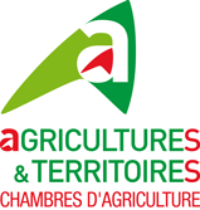Document type: summary of a report by COPA-COGECA
Author: COPA-COGECA
Preview: Following the Communication of the European Commission on the ECI "End the Cage Age" in June 2021, Copa and Cogeca commissioned an impact assessment from the Institute of Agricultural Economics Nonprofit Kft. (AKI, Budapest, Hungary), the Foundation Science and Education for Agri-Food Sector (FNEA, Warsaw, Poland) and the European Centre for Agricultural, Regional and Environmental Policy Research (EuroCARE GmbH, Bonn, Germany) to better understand the socioeconomic and environmental consequences of the ban of cages on the pig and laying hen sectors (meat and eggs) based on the elements reflected in the Commission's Communication. [...]Impact of the ban on farrowing crates on EU27 pig farm production
Pig production will be the most impacted sector according to the study. In all scenarios, the ban on farrowing crates would result in (1) significant investment, (2) deteriorating production efficiency (3) and, as the model results show, a reduction in the EU27 sow population and piglet production.
Production declines by 23.6% against the CAPRI baseline when farmers are required to transition immediately (Scenario A). Extending the transition deadline by 10 years (Scenarios B) or by 20 years (Scenarios C) significantly slows down this negative development, resulting in a decline of between 8.4-0.5%. Transitioning to free farrowing systems will require significant investment in new pens and in reconstructing existing buildings. Depending on what farmers decide, investment costs may range from around EUR 2.1 to 3.5 billion (based on 2021 prices) across the different scenarios.
Impact of the ban on enriched cages on EU27 egg farm production
The ban on enriched cages will require significant investment in the egg sector too, potentially resulting in reduced EU egg production. The laying hen flock is estimated to fall within the range of 330 million to 379 million after the full transition. Before the transition is complete, egg production is likely to go on a downward trajectory due to the decline in the number of laying hens. Production will also be influenced by a slight expected reduction in egg yields per laying hen.
The total value of the necessary investments, expressed similarly in 2021 prices, will also depend on whether farmers decide to abandon or continue with production in future. The EU-27 is expected to require investments totalling at least EUR 3.2 billion.
Overall impact on EU27
- A severe impact on the EU27 net trade balance in all scenarios [...] In most cases, domestic market demand does not decrease in proportion to the drop in production, leading to a very strong increase in imports, particularly of pork in all scenarios (between 1086% and 43.7%), but also of eggs (between 18% and 5%). Conversely, EU27 exports decrease sharply for pork and eggs. In all three scenarios, the EU27 trade balance will be in a deficit across these key types of livestock production by 2045.
- Producer/consumer price is highly dependent on the transition period chosen -In Scenario A, the average producer price for pork surges by 47.4% in the EU-27 compared to a 3.7% increase for eggs. When a 10-year or 20-year long transition period is granted, the rise in the producer price for pork becomes much smaller and leads to more moderate shocks for consumers. Changes in producer and consumer prices for eggs are less significant in all scenarios (between 3.8% and 0.3%). It should be noted that both producer and consumer prices for pork and eggs exhibit a larger increase in the EU-East.
- Different impacts on farm profits depending on production - Profits in the EU-27 pig sector shrink by a considerable 37.8% against the CAPRI baseline in Scenario A, explaining the sizeable decline in pork production in the extreme situation where no transition period is provided for. In the egg sector, the impacts are expected to be less severe with profits diminishing by 0.9% in Scenario A because of the substantial advancement in transitioning to cage-free housing systems. The estimated impact on profits in the pig sector appear to gradually erode over time. [...]- A real challenge for the integrity of the EU27 internal market [...] Regardless of the length of the transition period, the new policy appears to have a lasting dividing effect on the economic performance of the EU-West (EU-14) and EU-East (EU-13) livestock sectors. [...]- Concentration of pig and egg farms [...]- Little impact on the global warming potential (GWP) due to carbon leakage [...]






